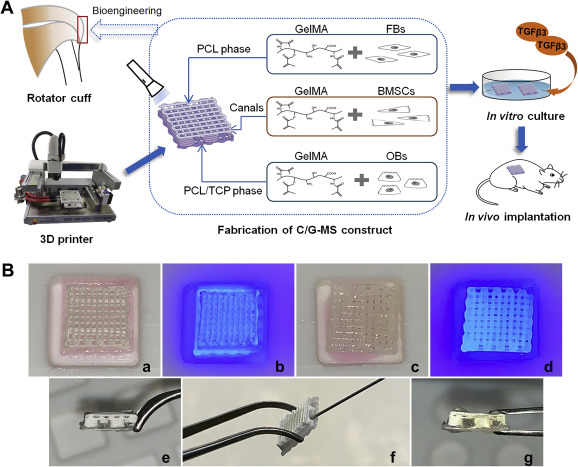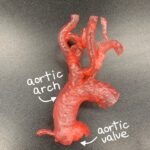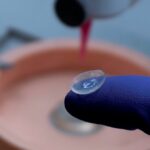

Researchers from China’s Shanghai Jiao Tong University School of Medicine are exploring complex developments in tissue engineering, releasing their findings in the recently published ‘Three-dimensional printed multiphasic scaffolds with stratified cell-laden gelatin methacrylate hydrogels for biomimetic tendon-to-bone interface engineering.’
In fabricating a tendon-to-bone interface, the authors delve into a new method for improving biomechanics in the shoulder. Considering that rotator cuff tears are such a common issue—usually as a result of injuries, but also due to degenerative disorders—there is a need for improved techniques in restoring functionality to patients.
Currently, there are ‘significant challenges’ in surgical repairs; in fact, the researchers cite data that re-tears occur 20-90 percent of the time. With a biomimetic interface, there is the potential for overcoming current challenges—although previous attempts have yielded scaffolds lacking the proper optimization, along with the production of patches which have also not proved suitable for repair in more serious cases.
In this case, 3D printed scaffolds offer the benefit of:
- Customized structures
- Prevention of scaffold delamination
- Controllable pore sizes for better cell growth
- Use of poly(ε-caprolactone) (PCL), with excellent biocompatibility and biomechanical properties
To overcome previous challenges with cell seeding, the authors theorized that they could successfully seed cells of multiple types by using gelatin methacrylate (GelMA) hydrogels loaded on scaffolds in a stratified pattern. The scaffolds were developed to represent tendon, fibrocartilage, and bone. 3D printing was performed on a 3D-Bioplotter® Manufacturer Series printer.
“A 0/90° lay-down pattern was used in the top (bone) and bottom (tendon) phases,” explained the researchers.

“This particular deposition pattern would eventually form four ducts with ample space for containing ECM-mimicking hydrogels and leave one opening of each duct for facile filling of hydrogels.”
Mice were used for the primary cultures in this study, featuring six males weighing 8 g each. Bone fragments were experimented with, including exposing the bone marrow cavity. After collecting cells, the researchers immersed the marrow with ‘growth media.’ These media were added further to promote cell attachment and growth, changed every three days, and treated with trypsin for passing.
Later in the study, the researchers attempted C/G-MS construct implantation by performing surgery on 27, 5-week-old mice.
“In our work, we managed to fabricate a biomimetic tendon-to-bone interface based on a much thinner 3D-printed multiphasic scaffold,” concluded the researchers. “The additive manufacturing technology not only provides rapid production via printing but also assures the integration and interconnectivity of the multiphasic scaffolds. The multihead 3D printing system used in this study allowed uninterrupted bottom-up printing from the biodegradable PCL phase mimicking the tendon to the osteoinductive PCL/TCP phase mimicking the bone.
“Our findings demonstrate that the stratified manner of fabrication based on the 3D-printed multiphasic scaffold is an effective strategy for tendon-to-bone interface engineering in terms of efficient cell seeding, chondrogenic potential, and distinct matrix deposition in varying phases,” concluded the researchers.
Materials for use in bioprinting and tissue engineering for scaffolds are the center of many studies that have the potential to change patients’ lives, from regenerating tissue after mastectomies to seeding human dermal fibroblasts, and experimenting with bone regeneration. What do you think of this news? Let us know your thoughts! Join the discussion of this and other 3D printing topics at 3DPrintBoard.com.
[Source / Images: ‘Three-dimensional printed multiphasic scaffolds with stratified cell-laden gelatin methacrylate hydrogels for biomimetic tendon-to-bone interface engineering’]
When it comes to 3D real estate visualization in the USA, our service provides the perfect solution for bringing property listings to life. Through our platform, you can easily access cutting-edge 3D renderings that showcase your real estate projects in a way that attracts potential buyers and investors. Whether it's residential, commercial, or mixed-use properties, our team of experts uses advanced technology to create immersive visualizations that highlight the best features of your property, making it easier for clients to imagine the space as their own.
Through our website, you can quickly get high-quality 3D real estate visualizations that are tailored to your specific needs. With our help, you'll stand out in the competitive real estate market by offering potential buyers a realistic, interactive view of your property. Our efficient process ensures a fast turnaround time, while our attention to detail guarantees that every aspect of the property is represented accurately, giving you a powerful marketing tool to promote your real estate listings.






